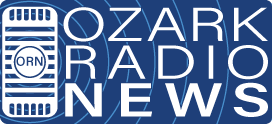LENEXA, KAN. (JAN. 4, 2024) – Each January, the United States Environmental Protection Agency (EPA) seeks to raise awareness of radon exposure during National Radon Action Month, encouraging residents to protect themselves and their families by having their homes tested for the presence of radon.
Radon is a naturally occurring radioactive gas that cannot be seen, smelled or tasted. If left untreated, radon can build up indoors, leading to adverse health effects. After smoking, radon is the second leading cause of lung cancer in the U.S., taking the lives of approximately 21,000 Americans every year. Radon exposure is a preventable health risk, and testing for radon can help prevent prolonged exposure.
“In the U.S., radon is the leading cause of lung cancer deaths among nonsmokers,” said EPA Region 7 Administrator Meg McCollister. “We urge everyone to protect their health and that of their loved ones by testing their homes for the presence of radon gas, especially those who live in an EPA Radon Zone One, which includes all of Iowa, most of Kansas, northwestern Missouri, and parts of southern and eastern Nebraska.”
Most homes in EPA Region 7’s four states are located in areas that fall within EPA Radon Zone One or Two, indicating high or moderate potential for elevated radon levels. To see if your home is in one of these areas, check EPA’s website to view a map of Radon Zones for your state.
Radon testing kits can be bought online and in home improvement stores. National Radon Program Services at Kansas State University offers test kits for purchase online.
EPA recommends taking action to fix your home if you discover radon levels above 4 picocuries per liter. If your home does have elevated levels of radon, a qualified professional can install a system to lower your indoor radon levels. For more guidance on how to address radon risks, see EPA’s radon website.
Background
For additional resources and information on the radon programs in EPA Region 7’s four states, visit the websites listed below:






